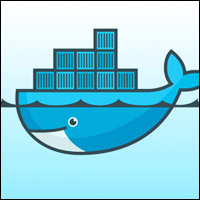
The general public knows little about the true technology fundamentals of cloud computing, suggests a recent survey commissioned by IT vendor Citrix. Almost a third of the roughly 1,000 U.S. adults polled thought cloud computing was related to weather.
However, the ascendance of Linux and open source software 10 years ago demonstrated that everyday people do not have to understand, appreciate or knowingly participate in a technology in order to leverage it in their lives.
To avoid further confusion about the cloud, I should probably define it. “Cloud computing” is basically the delivery of technology resources such as compute, storage and software applications as externally delivered services — specifically, third-party, hosted, pay-as-you-go services.
The cloud is, at its very essence, a service delivery and consumption model. Thus, cloud computing is defined not by the technologies that enable it, but instead by the method of service delivery and consumption.
True Cloud Believers
Similar to open source software — which today is associated with cost-savings, flexibility and other advantages, cloud computing has many additional connotations. For example, cloud computing is inherently “agile” or “automated,” in the view of many developers and industry executives.
Cloud computing is also a main driver and component of the devops trend, which blends application development with IT operations for greater speed and effectiveness.
When I was writing about Linux and open source software — as well as using it — 10 years ago, most of my friends and acquaintances knew little about it. Even some who were into technology had big misconceptions about free and open source software.
Nevertheless, it was likely these folks were using digital video recorders (which meant Linux, in many cases), flying commercial flights that relied on Linux and open source software for both aerospace and air-control technology, and making purchases at Linux-powered point-of-sale (POS) systems.
They were also laying the groundwork for their future cloud computing use, much of which is built on Linux and open source technology.
A few years ago, when I met with technology vendor executives and CEOs — many of whom are atop the cloud computing wave today — they often downplayed, dismissed or otherwise dissed cloud computing as just another buzz term. That seems to have changed as its implementation and success — not just of Amazon EC2 but several other cloud computing technologies — have illustrated the cloud is real.
This is another parallel to open source software. A decade ago it was often prohibited or limited within many, if not most, enterprise IT organizations, but today it is associated with speed, flexibility, performance and mitigation from vendor lock-in.
Just as we saw with the rise of open source software, a lot of cloud critics and haters are now speaking of the virtue, value and greatness that is cloud computing.
Cloud Ignorance, Cloud Bliss
For many people, cloud computing may still represent a lot of mystery or even myth. Fourteen percent of respondents to the Citrix survey admitted they pretended to know what cloud computing was during a job interview, for instance — and an even greater number, 17 percent, did the same thing on a first date.
What people do seem to know is that cloud computing will be a significant factor in their lives, with nearly 60 percent of respondents indicating they believed the “workplace of the future” would exist entirely in the cloud.
Again, as in the case of open source, just because today’s average folks don’t understand or think they’re using the cloud, that doesn’t mean they’re not significantly leveraging it.
Anyone who plays games or posts comments or photos on Facebook — or even just views those of others — is using cloud computing. Send a tweet? That’s the cloud. Check your Gmail? You guessed it, cloud computing helped make it happen.
Citing online shopping, banking, social networking and file sharing, Citrix estimated that 97 percent of Americans are actually using the cloud today.
Today we all rely on open source software and cloud computing to a high degree beyond our own technology use as well — for conducting financial transactions of all sizes, for transportation and travel, in entertainment, manufacturing, retail, government, pharmaceuticals and other life sciences, and more.
Regardless of people’s comprehension of the cloud, their consumption of it seems certain to expand — as it did with free and open source software.


















































